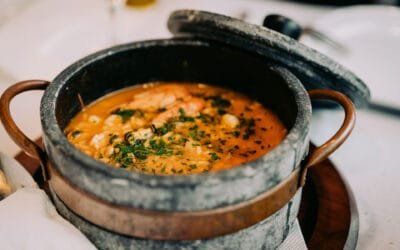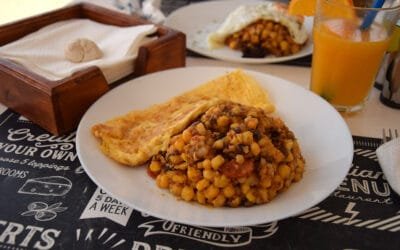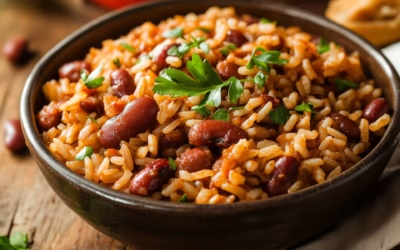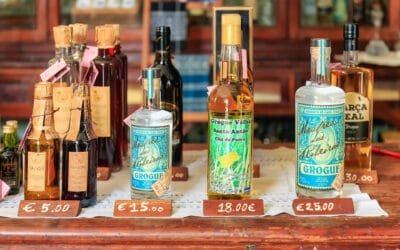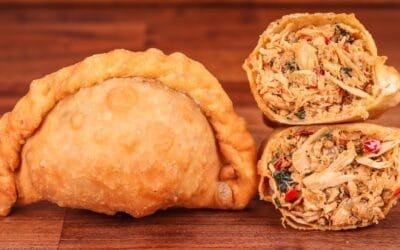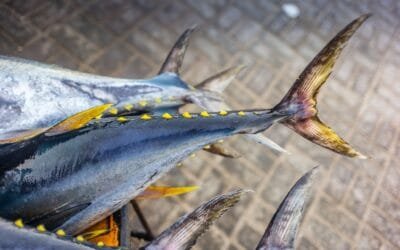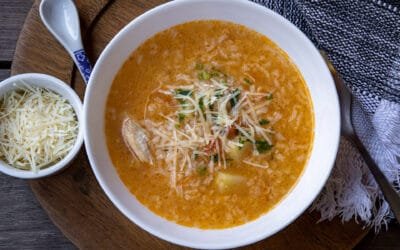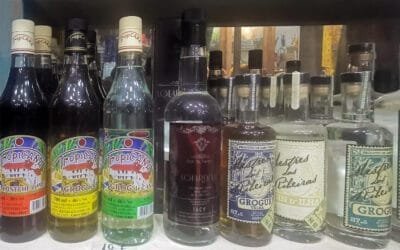Cape Verdean Tastes
Discover hearty dishes such as cachupa, grilled tuna, and seafood stews. Sal’s cuisine is simple and fresh, based on local fish, corn, and seasonal vegetables.Cape Verdean Pastéis Variations: Which one is The Best?
Pastéis are deeply rooted in the Cape Verdean tradition. No festive occasion is complete without a substantial mountain of these pastries on the table.
Cuisine: Savouring the Popular Tastes of Cape Verde
Cuisine born from scarcity and spice, equal parts survival and celebration, now savoured both at home and by visitors lucky enough to sit at Cape Verdean table.
Pontche: The Strong and Sweet Spirit of Cape Verde
Cape Verde may be best known for grogue. Still, its sweeter cousin, pontche, carries an altogether different reputation.
Cape Verdean Cuisine: The Simplicity, Freshness, and the Sea
The cuisine of Sal Island is shaped by the island’s geography, limited agricultural resources, and proximity to the sea. Daily meals revolve around what is local and available: fresh fish, corn, beans, root vegetables, and seasonal greens. Tuna, wahoo, grouper, and moray eel are commonly caught and served grilled, fried, or in stews. Due to the island’s dry climate, most produce is imported from other islands or abroad. This limits the variety and complexity of the cuisine. But the limitation has fostered a culture of adaptability and simplicity. Meals are often seasoned with garlic, onion, bay leaf, and a touch of malagueta pepper, keeping the flavours bold but uncluttered.
The Taste of Culture
Food on Sal is not just about eating; it’s about experiencing. It is a social act. Meals are shared among family or with guests, often outdoors, and accompanied by local grogue (sugarcane liquor), pontche or a cold Strela beer. Whether in a village courtyard or a beachside café, food serves as a moment to pause, gather, and connect.
Newcomers, New Tastes
Tourism has introduced international influences, particularly in Santa Maria. Italian, Portuguese, Chinese and Brazilian dishes are widely available. Still, local kitchens continue to prioritise traditional cooking methods and island-grown identity. Sal’s cuisine is not elaborate, but it is sincere — anchored in local ingredients, shaped by environment, and always part of community life.
Cachupa: The Most Popular Cape Verdean Stew (Recipe)
Cachupa is a typical dish of Cape Verde and has two main types: Cachupa Rica (which translates to rich), made with various types of meat, and Cachupa Pobre (which translates to poor) with fish only. The distinction between the types of Cachupa has to do with the fact that Rica contains meat, which makes the dish more expensive, and only accessible to the better off, while the poor – Pobre – version is more accessible to all.
Jagacida Beans & Rice: The Great Taste and Simple Recipe
Jagacida is a flavorful Cape Verdean dish of rice and beans that showcases the blend of Portuguese and West African influences in the islands’ cuisine.
Cape Verdean Beer: Strela and the Islands’ New Craft Wave
A cold Cape Verdean beer bottle lands on the table, its green glass beaded with condensation. On Sal or Santiago, that bottle is almost certainly Strela…
The Grogue: From Sugar Cane to the Beautiful Culture
The sugarcane used to make grogue arrived with the Portuguese in the 15th century. It took root in the archipelago and evolved into something distinct.
Cape Verdean Pastel de Atum: Easy Cooking Recipe and Video
[pac_divi_table_of_contents default_state="closed" included_headings="on|on|on|off|off|off" level_markers_1="none" level_markers_2="decimal" level_markers_3="whole" _builder_version="4.27.4" _module_preset="default" custom_margin="0px||||false|false"...
Rissóis: Simple Recipe for These Tasty Pastries (Video)
Crescent-shaped, breaded rissóis — golden and crisp on the outside, soft and creamy on the inside — are one of the most beloved finger foods across the islands.
Six Types of Tuna in Cape Verde: Learn Them Now
Tuna is the single most important species caught by Cape Verde fishermen. It makes up most of the commercial catch and is vital to artisanal fishermen.
Canja de Galinha: The Rich and Delicious Chicken Soup (Video)
[pac_divi_table_of_contents default_state="closed" level_markers_1="none" level_markers_2="decimal" level_markers_3="whole" _builder_version="4.27.4" _module_preset="default" custom_margin="0px||||false|false" custom_padding="0px||||false|false" hover_enabled="0"...
Popular Jagacida Variations: Which One Is Your Favourite?
Jagacida Variations: Jag is more than just a dish – it’s a staple of Cape Verdean cuisine, woven into the life and history of the islands and their diaspora.
Pontche: the Sweet Liqueur and its Great Traditions
[pac_divi_table_of_contents default_state="closed" included_headings="on|on|on|off|off|off" level_markers_1="none" level_markers_2="decimal" level_markers_3="whole" _builder_version="4.27.4" _module_preset="default" custom_margin="0px||||false|false"...
Grogue: The Famous, Strong Drink from Cape Verde
Grogue (pronounced “grog”) is to Cape Verde what cachaça is to Brazil or rum is to Jamaica: a sugarcane spirit deeply woven into the social fabric.

